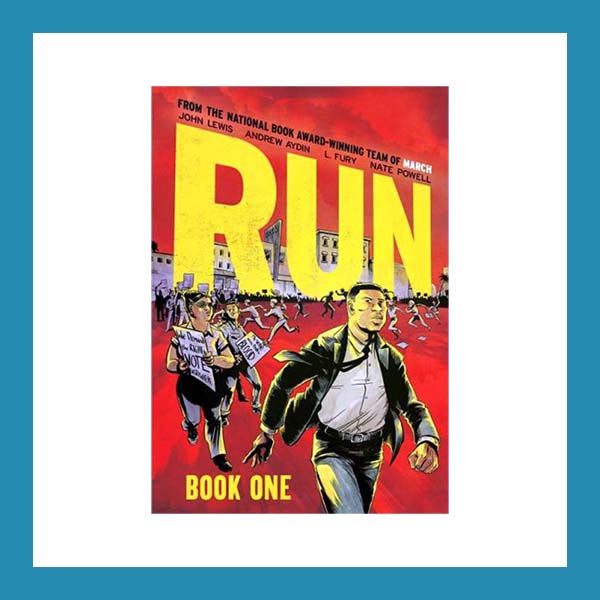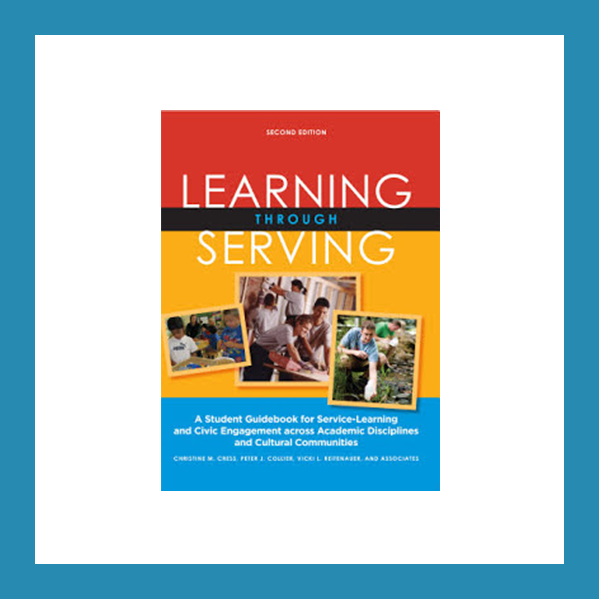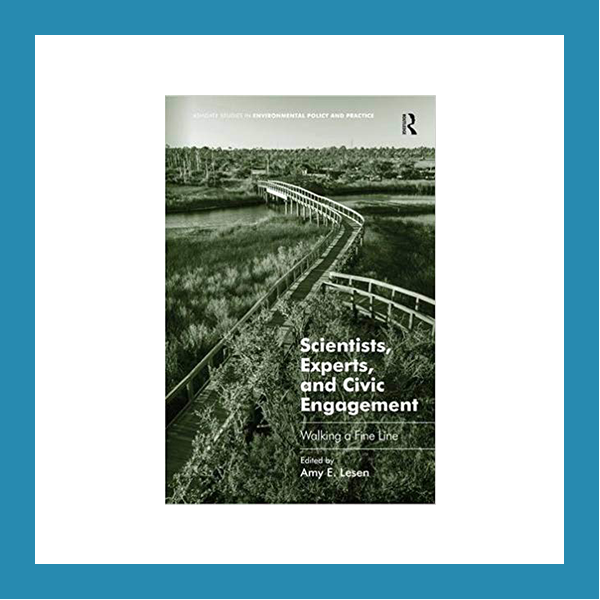By Melissa Hendrickx
Abstract
Today’s college students, much like our planet, are experiencing change at a rapidly increasing rate. Young people’s access to technology, and with it their susceptibility to cyber crises, connects them more than ever before to the driving forces in our global society. As educators grapple with how to engage students with these forces, they may look to programs or initiatives that seek to increase interpersonal connections and exposure to new environments. While these approaches carry with them enormous benefits, we cannot lose sight of the importance of inner-personal development and reflection. In addition to understanding how globalization affects populations, students must be able to articulate how global change affects them individually. Establishing this personal connection is key to their engagement on a larger scale. One tool for fostering this personal engagement is literary fiction.
Today’s college students, much like our planet, are experiencing change at a rapidly increasing rate. Young people’s access to technology, and with it their susceptibility to cyber crises, connects them more than ever before to the driving forces in our global society. As educators grapple with how to engage students with these forces, they may look to programs or initiatives that seek to increase interpersonal connections and exposure to new environments. While these approaches carry with them enormous benefits, we cannot lose sight of the importance of inner-personal development and reflection. In addition to understanding how globalization affects populations, students must be able to articulate how global change affects them individually. Establishing this personal connection is key to their engagement on a larger scale. One tool for fostering this personal engagement is literary fiction. Not only do stories provide individual characters to whom student readers can relate, they also allow students to understand global issues from other perspectives. As Stanford University English professor Paula Moya explained in a debate on the moral merits of literature, “literary fiction helps us develop additional schemas, other ways of seeing the world different from our own,” and it is “brilliantly suited to the exploration of what it means to be an ethical human being in a particular sociohistorical situation” (Tackett, 2014). Fictional landscapes allow students to be imaginative in their critical thinking processes, as there is a certain intellectual safety in hypothetical environments. For example, students can break down events within a story and explain causes and effects. They can examine characters in isolation or in relation to others. They can alter the variables and predict alternative outcomes. And because all of this happens in the realm of literary fiction, students have the freedom to take greater intellectual risks. When considering the long-term impact of technology, resource management, population growth, etc., science fiction literature is particularly applicable in envisioning the futuristic sociohistorical situations our world will experience. Because of this, three of the four novels I have selected to review fall under the science fiction umbrella. My aim with this review process is to provide descriptions of these novels so educators can decide if there is a thematic connection to their courses and offer suggestions for how these novels might relate to and/or benefit particular student populations. Additionally, I argue that it is imperative to read these four works through a socioeconomic lens. Although none of these works situate class conflicts as their central theme, the evidence of differing Brahmins and water pirates are classified as the undesirables. Those in positions of power dictate what practices are considered wasteful, such as using water for crop irrigation. Officials maintain that synthesized food, which requires no irrigation, is not only more resource-conscious, it is also healthier. However, Vera comments that the wealthy always seem to have “wasteful” fresh foods on their tables, thus making it clear that the rich get to establish rules for the poor to follow. Readers see Vera’s recognition of this discrepancy when she comes to the realization that money equals choices, while poverty equals chances (Stracher, 2011, p. 76). The novel also exposes other global class dividers. Vera and Will are briefly detained in a child labor camp and tasked with maintaining a water drilling operation. The children forced into this work are typically from the most impoverished areas. They work in a futuristic sweat shop in which working conditions mirror unregulated mining practices. After escaping the labor camp, Vera and Will arrive at a massive desalination plant. Because desalination is an extremely expensive process, only the wealthiest countries can afford it, further widening the gap between first and third world countries. The central conflict of The Water Wars is outlined as such: “Soon there will only be two sides: people with water, and those without. The next battle—the final battle—will be about who controls the spigot” (Stracher, 2011, p. 219). The story exposes the corruption associated with untempered government and corporation growth. Readers learn from Kai that there are undiscovered water reserves that would more than quench the suffocating planet’s thirst, but maniacal greed on the part of government and corporate agencies prevents these reserves from being used to benefit the global population. Stracher’s novel is written for a young adult audience, and the disjointed character development and convenient plot twists do not necessarily lend itself to deep critical analysis. However, because the novel deals with what is perhaps the greatest and most pressing resource shortage presently known, there is an immediacy within the narrative that I believe students will grasp. Those students interested in engineering or environmental science fields will be particularly engaged by the technological debates raised throughout the narrative. Access to clean water is arguably the most important global task we face. Currently, water access falls along economic lines, and The Water Wars details the dangerous outcomes if this trend continues. Chang-rae Lee’s novel, On Such a Full Sea, is also set in a futuristic North America, but it takes global events into greater consideration. Fan, the female teen protagonist, is the descendent of Chinese immigrants forced to flee China because of pollution threats. Their city “was made uninhabitable by the surrounding farms and factories and power plants and mining operations, the water fouled beyond a ll known methods of treatment,” causing their valley to turn into a rotting wasteland with “welling pools of human and animal” excrement (Lee, 2014, p. 17). This vivid description is in stark contrast to the land to which these Chinese refugees immigrate. B-Mor (formerly Baltimore) is a heavily planned and controlled settlement supported by the fishing industry. Further removed from settlements such as B-Mor are the Charters, which are essentially highly secured gated communities. The separation between the Charters and the settlements exposes inconsistencies in access to health care, education, and resources. Much like The Water Wars, Lee’s novel supports the claim that the wealthy have choices while the poor have chances. Because of the physical separation of the Charter villages from the rest of the country, On Such a Full Sea also illustrates the upper class’ ability to isolate themselves from the negative effects of global change. The narrative centers on Fan and her quest to find Reg, her boyfriend and the father of her unborn child. Reg had mysteriously disappeared from B-Mor, and there are rumors that he was taken by a pharmacorp due to the possibility that he may be genetically “C-free” or cancer free. Fan’s journey takes her into the open country, the unregulated and lawless areas of North America that belong to neither settlements nor Charters. She falls under the care of Quig, a former Charter veterinarian who lost everything and is now operating a black market clinic. There is evidence of human smuggling at Quig’s compound, highlighting the fact that the only currency many individuals have in the open country is their bodies. Fan becomes part of this human exchange and is given to a Charter family to serve as an assistant housekeeper. After a bizarre set of circumstances in which Fan is raped by her male employer and then trapped with a group of young girls as part of her female employer’s strange fetish, Fan escapes to the home of Vik, a disillusioned doctor who makes attempts to live an organic life in a synthetic world. Through Vik, Fan finds her long-lost brother, who was “promoted” to a Charter family due to high scores on an IQ test he took as a child. Fan’s brother has developed a wonder drug for the dreaded “C” disease and is enormously wealthy. He offers to help Fan find Reg, and he intends to support her and the rest of his forgotten B-Mor family with the money from the sale of his drug. But upon realizing that Fan is pregnant, and therefore carrying Reg’s genes, his greed takes over, and he attempts to kidnap her and give her to a pharmacorp for testing. Vik rescues Fan just in time, but the story ends abruptly thereafter. Although some of the events in Lee’s novel are a bit absurd, the book illustrates the effect money has on access to resources and new technology. The underlying threat of cancer throughout the story underscores the Charters’ fervor to develop new treatments. For people living in settlements like B-Mor, healthcare is a luxury few families can afford, leading some individuals to commit suicide in order to protect their families from mounting medical costs (Lee, 2014, p. 50). These growing costs are even beyond some Charters’ abilities. Vik explains to Fan that certain treatments are “sold at hourly auctions” (Lee, 2014, p. 273), meaning that only the top one-percent can afford them. On Such a Full Sea is a useful book for students interested in medical careers because it raises issues of healthcare affordability as well as the right to healthcare access. Countries like the United States are able to isolate themselves in ways that makes them better protected against global epidemics. This is similar to the Charters’ ability to protect themselves from the ills of the settlements or open country. Additionally, the purpose of education and standardized testing comes into play and would attract readers in education-related fields. The third novel, Lydia Millet’s Pills and Starships, discusses access to technology and delves into the question of how a person’s wealth determines one’s worth. Global warming has led to chaos in many regions, although for teenagers Nat and her brother Sam, their upper-class status allows them to live in relatively stable circumstances. They avoid the plight of most people who must constantly move to find resources. Due to technological advances, individuals living in wellto-do environments are living to such an old age that they need to (or are coerced into) buying death contracts. This is the case for Nat’s parents, who have chosen to spend their last week in Hawaii. The service corps, the group that manages the contracts, provides a Final Week for the contractees and their families. Millet takes a critical and satirical look at people’s dependence on prescriptions and a need for self help as she guides readers through the Final Week proceedings. Sam, who is part of the underground cyber-hacker community, is highly suspicious of the week’s events. He eventually leads Nat to a hidden group of rebels seeking to wrestle control back from the corporates. Once among the rebels, Nat discovers the dark agenda lurking behind the service corps’ Final Week propaganda. As Xing, one of the rebels, explains, the corps is tasked with population reduction, and by “making the system look and function like a service, the corps can meet their reduction quotas and collect revenues in the process. That way what private monies still exists are shifting to the corporates” (Millet, 2014, p. 219). It is at this juncture that social class mostly clearly comes into play. The service corps allows the wealthy to feel like they are in control by offering an assortment of death contract options. For poorer populations, there are no choices. The service corps hires mercenaries to kill large groups of the lower classes by whatever means necessary. The corporates follow their “Death Math” statistics, reducing populations in such a way that will allow the planet to re-stabilize itself. However, their idea of stability is one that benefits their agenda and disregards the less fortunate. The rebel factions also support population and carbon emission reduction but in a more natural and ethical way. Nat receives an additional lesson in class separation through her conversations with LaTessa, a character who worked for the service corps strictly because it provided her security. She tells Nat, “The First isn’t a place, kid. It’s just a way of living when you have money. The First is just wealth” (Millet, 2014, p. 261). Like Fan, LaTessa was forced to use her body as currency, further illustrating that one’s class position determines one’s worth. Nat, who displays her innocence, or perhaps naiveté , towards this “underworld,” offers readers a relatable character through which they can open their minds to new perspectives. Pills and Starships is the best written and most coherent of these three science fiction novels, and I would recommend it first and foremost for literature courses. Because Millet’s novel touches on all seven drivers of change, it is a thought-provoking read for students of all majors. The lone non-science fiction narrative, And the Mountains Echoed, is the third novel from the acclaimed Khaled Hosseini, author of The Kite Runner. Like his previous two books, And the Mountains Echoed follows the lives of several individuals all with ties to Afghanistan. Because this story comments on recent historical events, such as the American invasion of Afghanistan shortly after 9/11, students will understand how global forces currently affect their lives. Hosseini frequently illustrates the differences between how the rich and poor experience war. During the Soviet invasion of the 1980s, the wealthy families of Kabul are immune from most of the fighting and resource scarcity. Nabi, a chauffeur to a wealthy but reclusive man, notes that many families still chose to leave Afghanistan for more stable countries. These families are able to escape the violence and prosper in other nations while the poor are forced to flee as refugees. A generation later, the sons of Nabi’s neighbors return to Kabul once a semblance of security has been restored. Idris and Timur, who left Afghanistan for the United States in the 1990s, return to their childhood homes in 2003. They do not return to assist in the rebuilding process but to reclaim their father’s property, as its value has “skyrocketed now that thousands of foreign-aid workers have descended on Kabul and need a place to stay” (Hosseini, 2013, p. 136). Not only are the wealthy able to avoid wartime destruction, they are also able to profit from post-war reconstruction. The third-generation divide is depicted through Adel and Gholam. Adel is the son of a privileged politician and, as we later learn, a drug warlord. Gholam returns to Afghanistan having grown up in the Jalozai refugee camp in Pakistan. Gholam’s father was forced to flee the region and abandon his land. During his absence, Adel’s father lays claim to the land and refuses to acknowledge Gholam’s father as the rightful owner. The corruption within the Afghan government is shown through the bribery driven bureaucracy that keeps individuals like Gholam’s father in power. Hosseini’s novel depicts the myriad ways in which the widening wage gap makes Afghanistan’s poor unable to contend with global factors. They are more likely to face food shortages due to climate change, more likely to fall victim to corrupt governance, and more likely to become refugees due to violent conflicts. Because of the current rise of ISIS in the Middle East, Hosseini’s work is topical, particularly for students pursuing majors in political science, international studies, or business. As all of these novels illustrate, the seven global drivers of change do not act in isolation. Literature’s ability to create complex, interwoven scenarios is another reason why it is such a valuable tool in increasing students’ global engagement. These works offer characters to whom students can individually attach themselves, and plots through which students can realize the effects of global change. Additionally, these authors force readers to acknowledge the pervasiveness of the class divide. There will be many variations of globalization across the economic spectrum. Students’ ability to understand these different experiences will make them more adept innovators as they seek responsible solutions for driving our planet forward.


